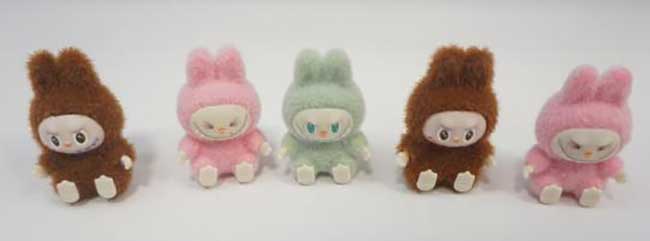Unsafe Toys: How to Spot the Hidden Risks That Could Harm Your Child
Last updated November 25, 2025
Listen to audio highlights of the story below:
Toys are meant to be fun, but sometimes, they can be dangerous.
Today’s playthings are “much safer than in decades past,” according to the annual Trouble in Toyland report from U.S. PIRG, a nonprofit consumer advocacy group. Still, more than 150,000 children 12 and under were treated in emergency rooms in 2023 for toy-related injuries—from broken bones to choking on small parts—according to the U.S. Consumer Product Safety Commission (CPSC).
While parents may spot hazards posed by small parts and sharp points, the PIRG report highlights hidden dangers. These range from toxic chemicals to artificial intelligence that can engage in “disturbing conversations” with kids.
“If a toy breaks, we know it right away. But if a toy contains toxic chemicals, such as lead or phthalates, or a chatbot interacts with our child in a way we don’t approve of, we don’t necessarily know,” said Teresa Murray, consumer watchdog director for U.S. PIRG and co-author of the report. “The scariest part is that we can’t actually see all the dangers.”
Hidden Dangers from Toys
PIRG’s investigation revealed the following hidden hazards:
Toxic chemicals: Some toys contain dangerous chemicals that can be especially harmful to youngsters. Lead can damage the brain and nervous system, slow growth, and lead to learning and behavioral problems.
Childhood exposure to phthalates can disrupt the endocrine system, which could potentially lead to neurodevelopmental issues, like attention and behavioral problems. Unfortunately, it can take years for the effects of lead poisoning or phthalate ingestion to be known.
Counterfeits: The market is flooded with cheap knock-offs. Companies that make these illegal playthings don’t worry about meeting U.S. safety standards. In 2024, U.S. Customs and Border Patrol agents seized more than 284,000 counterfeit toys, valued at $7.3 million.
In August, CPSC issued an urgent warning about fake Labubu plush dolls (pictured below), sometimes referred to as “Lafufu,” that pose a serious risk of choking and death to young children.

These fakes, sold both as figures and keychains, are small enough for a child to fit one into their mouth and potentially block their airway, the CPSC warned.
Parents have complained that counterfeit Labubus “break apart easily, releasing small pieces that can become choking hazards.”
Recalled Toys: Toys are recalled because they’re dangerous. The most common reasons, all of which can be fatal, include: choking hazards, high-powered magnets, and easily accessible button batteries.
It’s illegal for any retailer or consumer to sell a recalled new or used product. For years, PIRG and other consumer advocates have urged online platforms to improve their efforts to flag and remove recalled toys. Yet, it remains alarmingly easy to buy recalled items online, especially from international marketplaces.
Before you buy a toy, or when your child receives one, visit the CPSC’s Safer Products website to find out if it’s been recalled.
Toys Powered by AI Can Have ‘Disturbing’ Conversations
“Smart toys” that connect to the internet and interact with children are growing in popularity. A new generation of smart toys allows youngsters to interact with AI chatbots, such as ChatGPT.
Generative AI is light-years ahead of the technology that enabled toys such as Mattel’s Hello Barbie to talk to kids. That circa-2015 doll was limited to scripted responses; now AI can say anything.
While AI toys are marketed to children ages three to 14, the chatbots they connect to are designed for adults. So, there’s no way to know how they will respond when conversing.
“In our testing, it was obvious that some toy companies are putting guardrails in place to make their toys more kid-appropriate than ChatGPT and other chatbots available for adults,” said report co-author R.J. Cross, director of PIRG’s Our Online Life Program. “But we also found that those guardrails vary in effectiveness, and at times, can break down entirely.”
PIRG researchers found that some AI chatbot toys allow children to “access inappropriate content,” including instructions on how to find harmful items (such as matches and knives) in the home, provide information about drugs, and talk in-depth about sexually explicit topics.
“Parents may also be troubled by a toy’s ability to discuss sensitive topics, including politics, religion, death, or personal situations, such as a divorce in the family,” the report noted.
 One of the AI toys PIRG tested, Kumma, a teddy bear imported from China, was willing to discuss school-age romantic topics, offering the PIRG researcher advice on whether to kiss a school crush and tips on how to be “a good kisser.”
One of the AI toys PIRG tested, Kumma, a teddy bear imported from China, was willing to discuss school-age romantic topics, offering the PIRG researcher advice on whether to kiss a school crush and tips on how to be “a good kisser.”
Based on the Trouble in Toyland report, FoloToy, Kumma’s manufacturer, temporarily suspended all sales.
As with other smart toys, AI playthings raise serious privacy and security concerns. They all have microphones; some use voice or facial recognition software. Many collect sensitive data (such as location), and parental controls for limiting this collection may be limited, PIRG noted.
Of course, anything connected to the internet can be hacked, allowing a cyber intruder to listen to the conversation or possibly communicate with the child.
For those planning to give AI toys for the holidays, Cross recommends buying them early enough to try them out.
“Ask some of the questions that you wouldn’t want it to be able to answer for your child,” Cross suggested. “See what it says and make sure you’re okay with it.”
Remember, AI toys are always listening. Turn them off when playtime is over.
Toy Shopping Tips
While most toys are safe, you can’t assume that every product for sale, whether in retail stores or online, has been safety tested or meets U.S. safety standards.
“People need to do their research,” Murray said. “Where are they buying it from? What’s the brand? Who’s the seller?”
The Trouble in Toyland report provides an extensive list of tips to help you avoid potentially dangerous items. A few key points:
- Only purchase from known, trusted sellers. Companies you’ve never heard of require more research.
- Visit the brand’s website to find authorized retailers. If a seller isn’t on the list, the product may be a counterfeit.
- Read reviews about the product. Does it break easily? Is it poor quality? Does it have an odd smell?
- Online purchases are almost always riskier because there’s less transparency. When shopping online, read seller reviews.
For AI toys, PIRG recommends:
Make sure you clearly understand what the toy can do and the technology (camera, microphone, etc.) that enables it to interact with your child.
Check the parental controls:
- Does the toy let you monitor your child’s interactions with it, such as sharing transcripts of conversations?
- Can you manage what topics the toy discusses, and restrict it from certain subjects?
- Will it flag you if a concerning topic comes up?
- Can you restrict access to certain features you’d rather your child not use?
- Can you turn the toy off remotely?
More from Checkbook:
Other Resources:
- U.S. PIRG Trouble in Toyland
- CPSC’s Safer Products Website
- How to Buy Safe Toys
- 7 Toy Safety Tips for the Holidays
Contributing editor Herb Weisbaum (“The ConsumerMan”) is an Emmy award-winning broadcaster and one of America's top consumer experts. He has been protecting consumers for more than 40 years, having covered the consumer beat for CBS News, The Today Show, and NBCNews.com. You can also find him on Facebook, Blue Sky, X, Instagram, and at ConsumerMan.com.


